Charles M. Kozierok The TCP-IP Guide
Подождите немного. Документ загружается.

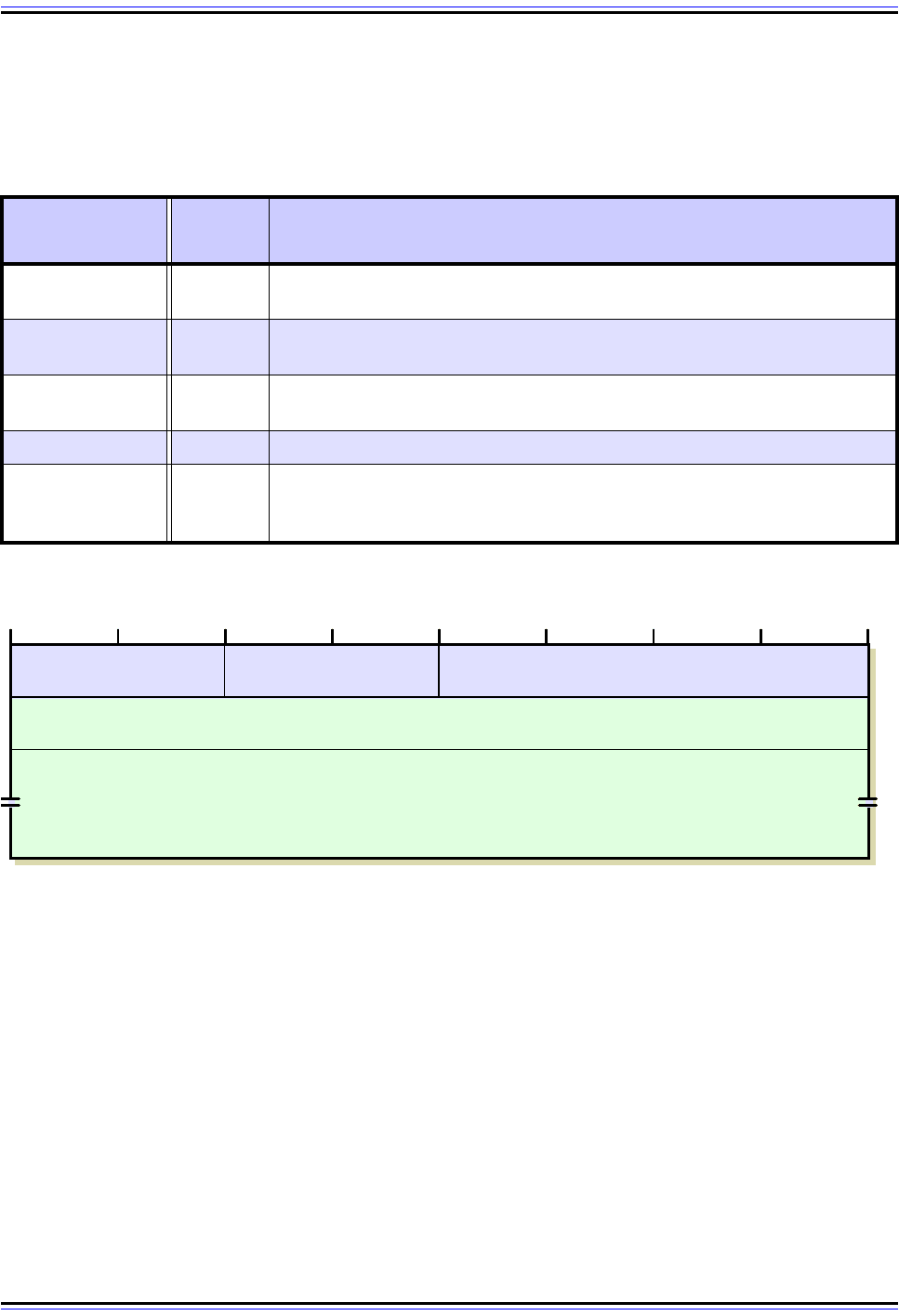
The TCP/IP Guide - Version 3.0 (Contents) ` 621 _ © 2001-2005 Charles M. Kozierok. All Rights Reserved.
ICMPv4 Destination Unreachable Message Format
Table 89 and Figure 139 show the specific format for ICMPv4 Destination Unreachable
messages.
ICMPv4 Destination Unreachable Message Subtypes
There are many different reasons why it may not be possible for a datagram to reach its
destination. Some of these may be due to erroneous parameters (like the invalid IP address
example mentioned above.) A router might have a problem reaching a particular network
for whatever reason. There can also be other more “esoteric” reasons as well why a
datagram cannot be delivered.
Table 89: ICMPv4 Destination Unreachable Message Format
Field Name
Size
(bytes)
Description
Type 1
Type: Identifies the ICMP message type; for Destination Unreachable
messages this is set to 3.
Code 1
Code: Identifies the “subtype” of unreachable error being communicated.
See Table 90 for a full list of codes and what they mean.
Checksum 2
Checksum: 16-bit checksum field for the ICMP header, as described in the
topic on the ICMP common message format.
Unused 4 Unused: 4 bytes that are left blank and not used.
Original
Datagram
Portion
Variable
Original Datagram Portion: The full IP header and the first 8 bytes of the
payload of the datagram that prompted this error message to be sent.
Figure 139: ICMPv4 Destination Unreachable Message Format
Type = 3
Code
(Error Subtype)
Checksum
Unused
Original IP Datagram Portion
(Original IP Header + First Eight Bytes Of Data Field)
4 8 12 16 20 24 28 320

The TCP/IP Guide - Version 3.0 (Contents) ` 622 _ © 2001-2005 Charles M. Kozierok. All Rights Reserved.
For this reason, the ICMPv4 Destination Unreachable message type can really be
considered a class of related error messages. The receipt of a Destination Unreachable
message tells a device that the datagram it sent couldn't be delivered, and the reason for
the non-delivery is indicated by the Code field in the ICMP header. Table 90 shows the
different Code values, corresponding message subtypes and a brief explanation of each.
Table 90: ICMPv4 Destination Unreachable Message Subtypes (Page 1 of 2)
Code
Value
Message Subtype Description
0
Network
Unreachable
The datagram could not be delivered to the network specified in the
network ID portion of the IP address. Usually means a problem with
routing but could also be caused by a bad address.
1 Host Unreachable
The datagram was delivered to the network specified in the network ID
portion of the IP address but could not be sent to the specific host
indicated in the address. Again, this usually implies a routing issue.
2
Protocol
Unreachable
The protocol specified in the Protocol field was invalid for the host to
which the datagram was delivered.
3 Port Unreachable The destination port specified in the UDP or TCP header was invalid.
4
Fragmentation
Needed and DF Set
This is one of those “esoteric” codes. ☺ Normally, an IPv4 router will
automatically fragment a datagram that it receives if it is too large for
the maximum transmission unit (MTU) of the next physical network link
the datagram needs to traverse. However, if the DF (Don't Fragment)
flag is set in the IP header, this means the sender of the datagram
does not want the datagram ever to be fragmented. This puts the
router between the proverbial rock and hard place, and it will be forced
to drop the datagram and send an error message with this code.
This message type is most often used in a “clever” way, by intentionally
sending messages of increasing size to discover the maximum trans-
mission size that a link can handle. This process is called MTU path
discovery.
5 Source Route Failed
Generated if a source route was specified for the datagram in an option
but a router could not forward the datagram to the next step in the
route.
6
Destination Network
Unknown
Not used; Code 0 is used instead.
7
Destination Host
Unknown
The host specified is not known. This is usually generated by a router
local to the destination host and usually means a bad address.
8 Source Host Isolated Obsolete, no longer used.
9
Communication with
Destination Network
is Administratively
Prohibited
The source device is not allowed to send to the network where the
destination device is located.
10
Communication with
Destination Host is
Administratively
Prohibited
The source device is allowed to send to the network where the desti-
nation device is located, but not that particular device.
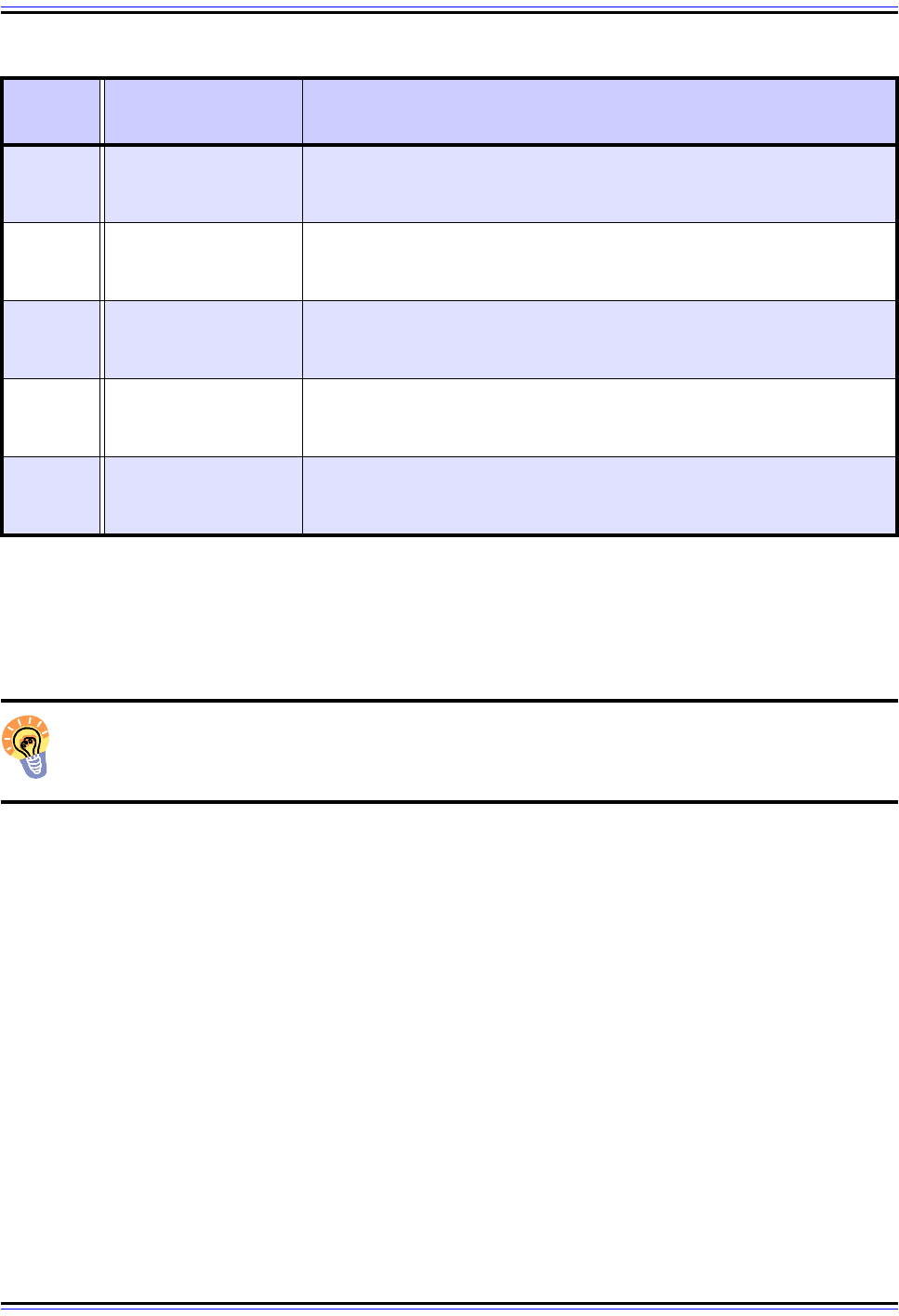
The TCP/IP Guide - Version 3.0 (Contents) ` 623 _ © 2001-2005 Charles M. Kozierok. All Rights Reserved.
As you can see in that table, not all of these codes are actively used at this time. For
example, code 8 is obsolete and code 0 is used instead of 6. Also, some of the higher
numbers related to the Type Of Service field aren't actively used because Type Of Service
isn't actively used.
Key Concept: ICMPv4 Destination Unreachable messages are used to inform a
sending device of a failure to deliver an IP datagram. The message’s Code field
provides information about the nature of the delivery problem.
Interpretation of Destination Unreachable Messages
Finally, it's important to remember that just as IP is “best effort”, the reporting of
unreachable destinations using ICMP is also “best effort”. For one things, these ICMP
messages are themselves carried in IP datagrams. More than that, however, one must
remember that there may be problems that prevent a router from detecting failure of
delivery of an ICMP message, such as a low-level hardware problem. A router could,
theoretically, also be precluded from sending an ICMP message even when failure of
delivery is detected, for whatever reason.
For this reason, the sending of Destination Unreachable messages should be considered
supplemental. There is no guarantee that every problem sending a datagram will result in
a corresponding ICMP message. No device should count on receiving an ICMP Destination
Unreachable for a failed delivery any more than it counts on the delivery in the first place.
This is why the higher-layer mechanisms mentioned at the start of this topic are still
important.
11
Destination Network
Unreachable for
Type of Service
The network specified in the IP address cannot be reached due to
inability to provide service specified in the Type Of Service field of the
datagram header.
12
Destination Host
Unreachable for
Type of Service
The destination host specified in the IP address cannot be reached
due to inability to provide service specified in the datagram's Type Of
Service field.
13
Communication
Administratively
Prohibited
The datagram could not be forwarded due to filtering that blocks the
message based on its contents.
14
Host Precedence
Violation
Sent by a first-hop router (the first router to handle a sent datagram)
when the Precedence value in the Type Of Service field is not
permitted.
15
Precedence Cutoff In
Effect
Sent by a router when receiving a datagram whose Precedence value
(priority) is lower than the minimum allowed for the network at that
time.
Table 90: ICMPv4 Destination Unreachable Message Subtypes (Page 2 of 2)
Code
Value
Message Subtype Description

The TCP/IP Guide - Version 3.0 (Contents) ` 624 _ © 2001-2005 Charles M. Kozierok. All Rights Reserved.
ICMPv4 Source Quench Messages
When a source device sends out a datagram, it will travel across the internetwork and
eventually arrive at its intended destination—hopefully. At that point, it is up to the desti-
nation device to process the datagram, by examining it and determining which higher-layer
software process to hand the datagram.
If a destination device is receiving datagrams at a relatively slow rate, it may be able to
process each datagram “on the fly” as it is received. However, datagram receipt in a typical
internetwork can tend to be uneven or “bursty”, with alternating higher and lower rates of
traffic. To allow for times when datagrams are arriving faster than they can be processed,
each device has a buffer where it can temporarily hold datagrams it has received until it has
a chance to deal with them.
However, this buffer is itself limited in size. Assuming the device has been properly
designed, the buffer may be sufficient to smooth out high-traffic and low-traffic periods most
of the time. Certain situations can still arise in which traffic is received so rapidly that the
buffer itself fills up entirely. Some examples of scenarios in which this might happen include:
☯ A single destination is overwhelmed by datagrams from many sources, such as a
popular Web site being swamped by HTTP requests.
☯ Device A and device B are exchanging information but device A is a much faster
computer than device B and can generate outgoing and process incoming datagrams
much faster than B can.
☯ A router receives a large number of datagrams over a high-speed link that it needs to
forward over a low-speed link; they start to pile up while waiting to be sent over the
slow link.
☯ A hardware failure or other situation causes datagrams to sit at a device unprocessed.
A device that continues to receive datagrams when it has no more buffer space is forced to
discard them, and is said to be congested. A source that has its datagram discarded due to
congestion won't have any way of knowing this, since IP itself is unreliable and unacknowl-
edged. Therefore, while it is possible to simply allow higher-layer protocols to detect the
dropped datagrams and generate replacements, it makes a lot more sense to have the
congested device provide feedback to the sources, telling them that it is overloaded.
In IPv4, a device that is forced to drop datagrams due to congestion provides feedback to
the sources that overwhelmed it by sending them ICMPv4 Source Quench messages. Just
as we use water to quench a fire, a Source Quench method is a signal that attempts to
quench a source device that is sending too fast. In other words, it's a polite way for one IP
device to tell another: “SLOW DOWN!” When a device receives one of these messages it
knows it needs to cut down on how fast it is sending datagrams to the device that sent it.
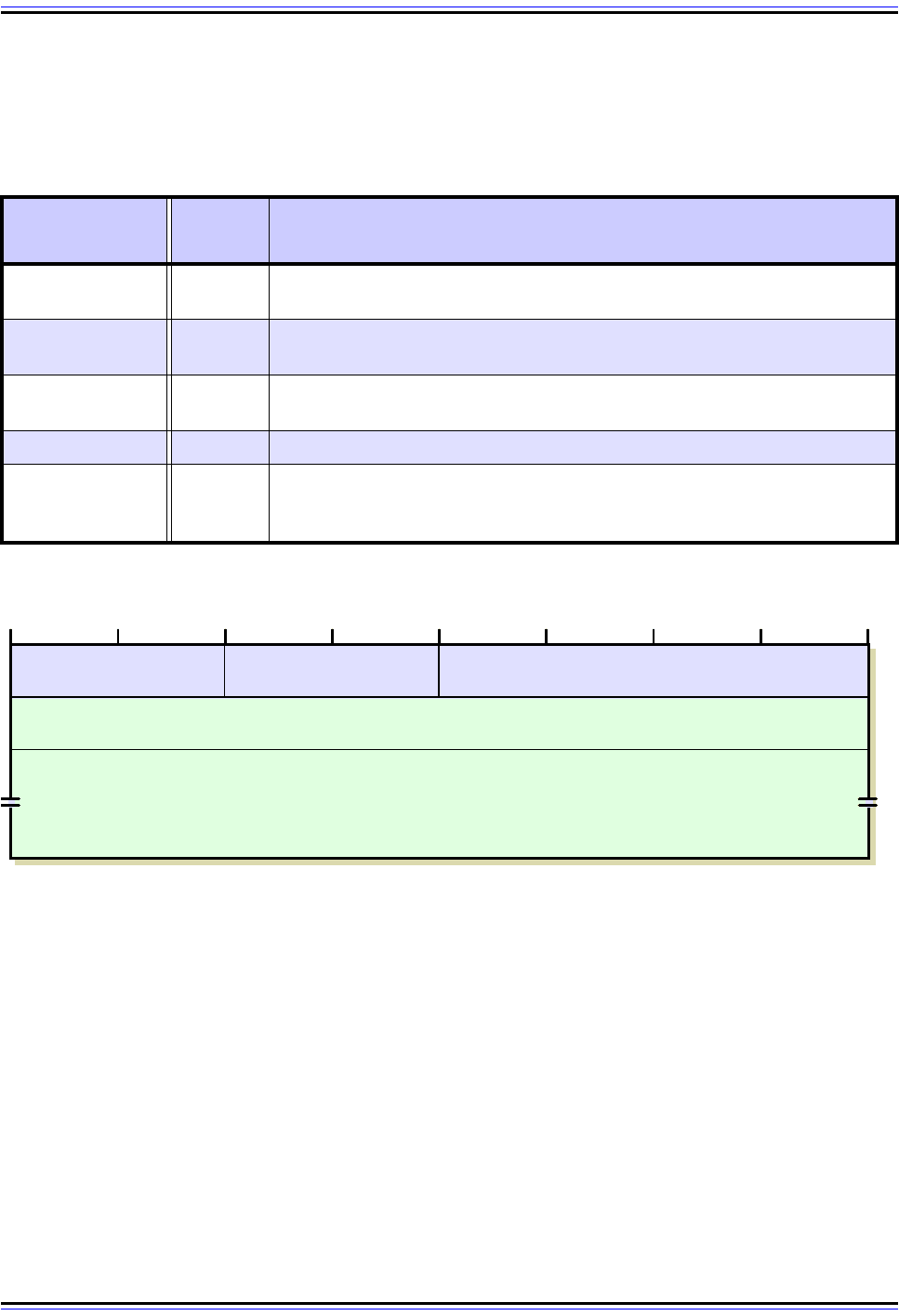
The TCP/IP Guide - Version 3.0 (Contents) ` 625 _ © 2001-2005 Charles M. Kozierok. All Rights Reserved.
ICMPv4 Source Quench Message Format
The specific format for ICMPv4 Source Quench messages can be found in Table 91 and
Figure 140.
Problems With Source Quench Messages
What's interesting about the Source Quench format is that it is basically a “null message”. It
tells the source that the destination is congested but provides no specific information about
that situation, nor does it specify what exactly the destination wants the source to do, other
than to cut back on its transmission rate in some way. There is also no method for the desti-
nation to signal a source it has “quenched” that it is no longer congested and to resume its
prior sending rate. This means the response to a Source Quench is left up to the device that
receives it. Usually, a device will cut back its transmission rate until it no longer receives the
messages any more, and then may try to slowly increase the rate again.
Table 91: ICMPv4 Source Quench Message Format
Field Name
Size
(bytes)
Description
Type 1
Type: Identifies the ICMP message type; for Source Quench messages
this is set to 4.
Code 1
Code: Identifies the “subtype” of error being communicated. For Source
Quench messages this is not used, and the field is set to 0.
Checksum 2
Checksum: 16-bit checksum field for the ICMP header, as described in the
topic on the ICMP common message format.
Unused 4 Unused: 4 bytes that are left blank and not used.
Original
Datagram
Portion
Variable
Original Datagram Portion: The full IP header and the first 8 bytes of the
payload of the datagram that was dropped due to congestion.
Figure 140: ICMPv4 Source Quench Message Format
Type = 4 Code = 0 Checksum
Unused
Original IP Datagram Portion
(Original IP Header + First Eight Bytes Of Data Field)
4 8 12 16 20 24 28 320
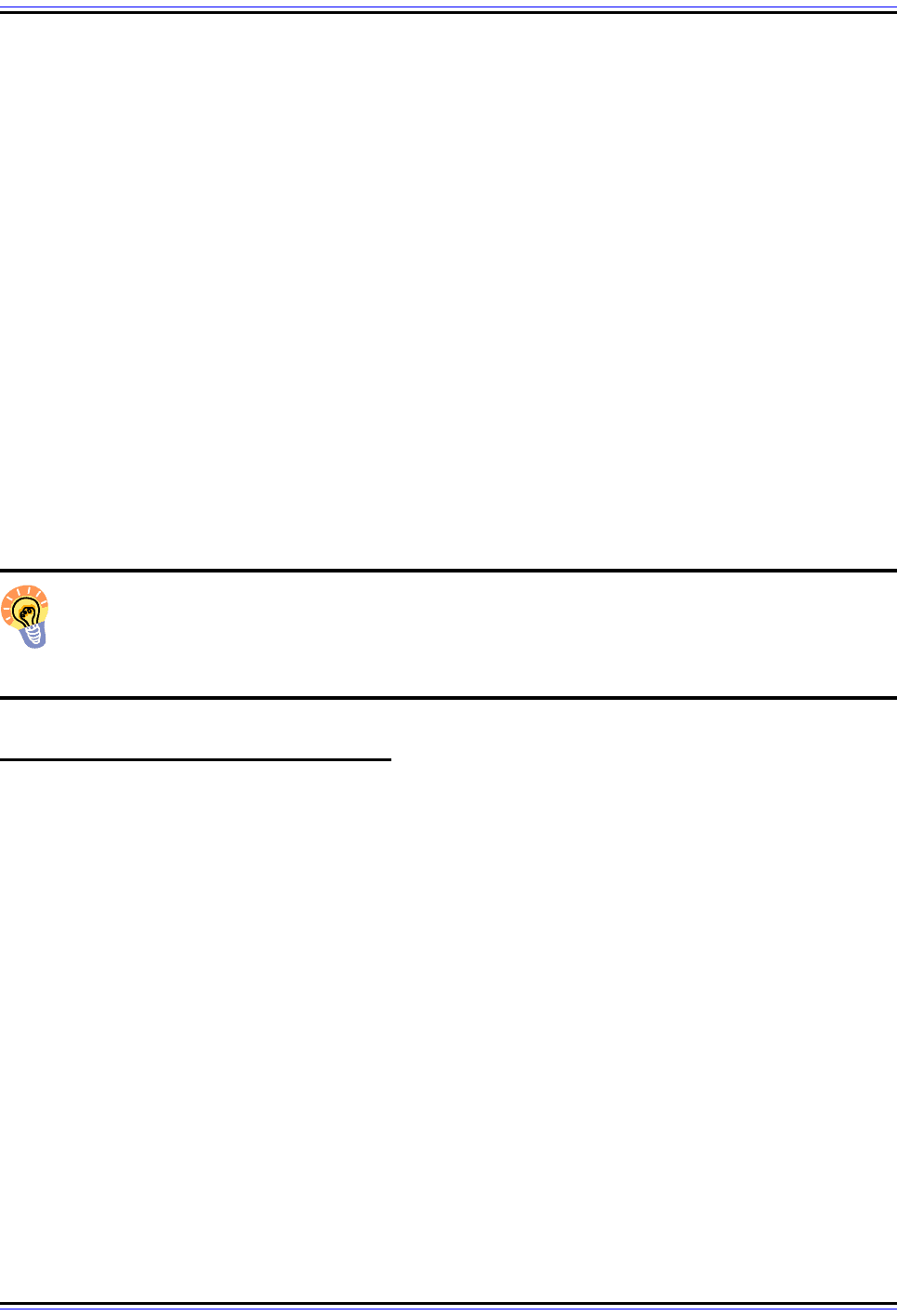
The TCP/IP Guide - Version 3.0 (Contents) ` 626 _ © 2001-2005 Charles M. Kozierok. All Rights Reserved.
In a similar manner, there are no rules about when and how a device generates Source
Quench messages in the first place. A common convention is that one message is
generated for each dropped datagram. However, more intelligent algorithms may be
employed, specially on higher-end routers, to predict when the device's buffer will be filled
and preemptively quench certain sources that are sending too quickly. Devices may also
decide whether to quench all sources when they become busy, or only certain ones. As with
other ICMP error messages, a device cannot count on a Source Quench being sent when
one of its datagrams is discarded by a busy device.
The lack of information communicated in Source Quench messages makes them a rather
crude tool for managing congestion. In general terms, the process of regulating the sending
of messages between two devices is called flow control, and is usually a function of the
transport layer. The Transmission Control Protocol (TCP) actually has a flow control
mechanism that is far superior to the use of ICMP Source Quench messages.
Another issue with Source Quench messages is that they can be abused. Transmission of
these messages by a malicious user can cause a host to be slowed down when there is no
valid reason. This security issue, combined with the superiority of the TCP method for flow
control, has caused Source Quench messages to largely fall out of favor.
Key Concept: ICMPv4 Source Quench messages are sent by a device to request
that another reduce the rate at which it is sending datagrams. They are a rather
crude method of flow control compared to more capable mechanisms such as that
provided by TCP.
ICMPv4 Time Exceeded Messages
Large IP internetworks can have thousands of interconnected routers that pass datagrams
between devices on various networks. In large internetworks, the topology of connections
between routes can become complex, which makes routing more difficult. Routing protocols
will normally allow routers to find the best routes between networks, but in some situations
an inefficient route might be selected for a datagram.
In the worst case of inefficient routing, a router loop may occur. An example of this situation
is where Router A thinks datagrams intended for network X should next go to Router B;
Router B thinks they should go to Router C; and Router C thinks they need to go to Router
A. (See the ICMPv6 TIme Exceeded Message description for an illustration of a router
loop.)
If a loop like this occurred, datagrams for network X entering this part of the internet would
circle forever, chewing up bandwidth and eventually leading to the network being unusable.
As insurance against this occurrence, each IP datagram includes in its header a Time To
Live (TTL) field. This field was originally intended to limit the maximum time (in seconds)
that a datagram could be on the internetwork, but now limits the life of a datagram by
limiting the number of times the datagram can be passed from one device to the next. The
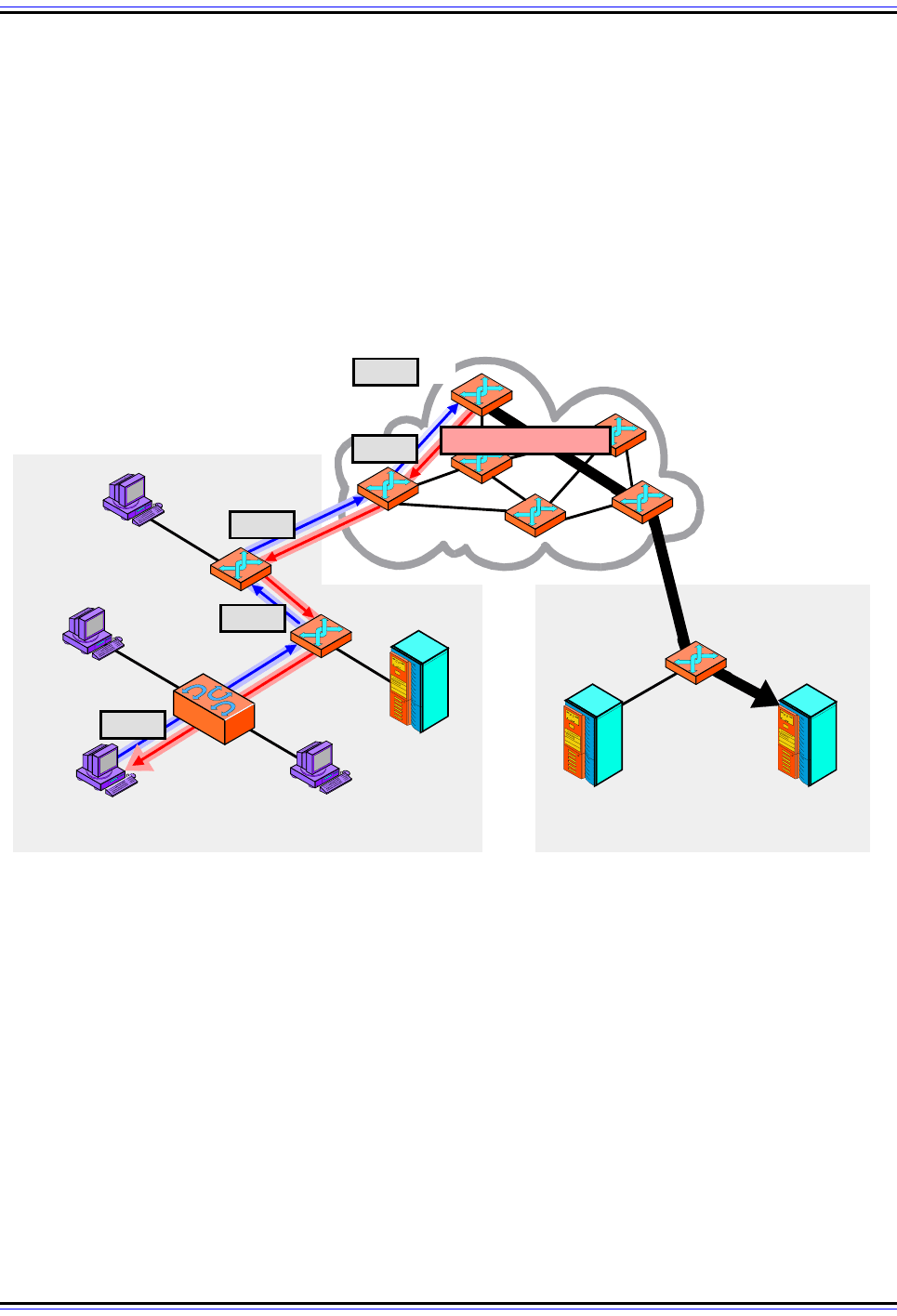
The TCP/IP Guide - Version 3.0 (Contents) ` 627 _ © 2001-2005 Charles M. Kozierok. All Rights Reserved.
TTL is set to a value by the source that represents the maximum number of hops it wants
for the datagram. Each router decrements the value; if it ever reaches zero the datagram is
said to have expired and is discarded.
When a datagram is dropped due to expiration of the TTL field, the device that dropped the
datagram will inform the source of this occurrence by sending it an ICMPv4 Time Exceeded
message, as shown in Figure 141. Receipt of this message indicates to the original sending
device that there is either a routing problem when sending to that particular destination, or
that it set the TTL field value too low in the first place. As with all ICMP messages, the
device receiving it must decide whether and how to respond to receipt of the message. For
example, it may first try to re-send the datagram with a higher TTL value.
There is another “time expiration” situation where ICMP Time Exceeded messages are
used. When an IP message is broken into fragments, the destination device is charged with
reassembling them into the original message. One or more fragments may not make it to
the destination, so to prevent the device from waiting forever, it sets a timer when the first
fragment arrives. If this timer expires before the others are received, the device gives up on
this message. The fragments are discarded, and a Time Exceeded message generated.
Figure 141: Expiration of an IP Datagram and Time Exceeded Message Generation
In this example, device A sends an IP datagram to device B that has a Time To Live (TTL) field value of only 4
(perhaps not realizing that B is 7 hops away). On the fourth hop the datagram reaches R4, which decrements
its TTL field to zero and then drops it as expired. R4 then sends an ICMP Time Exceeded message back to A.
B
R1
R2
A
Remote NetworkLocal Network
R3
R4
R5
R6
TTL = 1
ICMP Time Exceeded
TTL = 2
TTL = 3
TTL = 4
TTL = 0
Internet
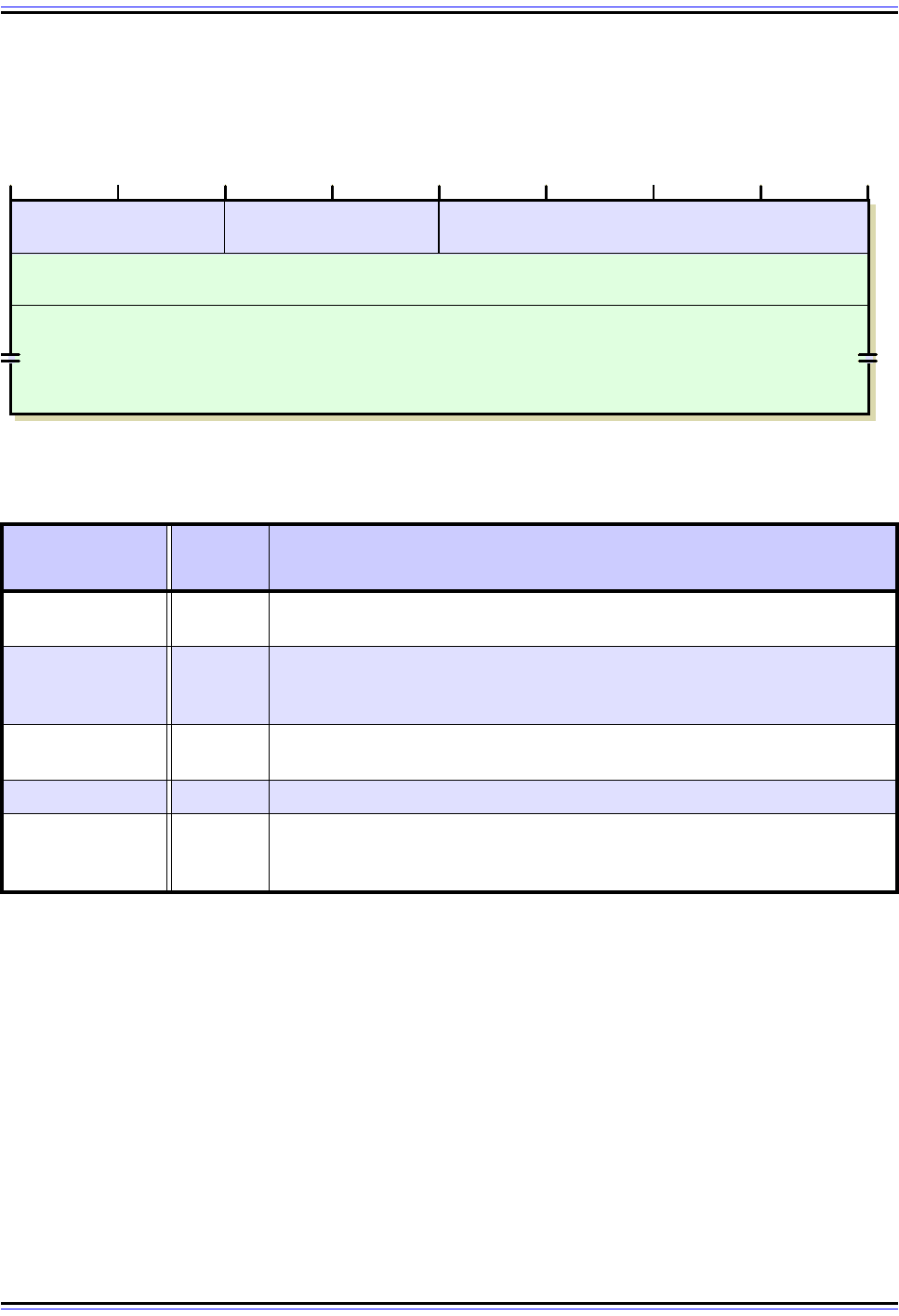
The TCP/IP Guide - Version 3.0 (Contents) ` 628 _ © 2001-2005 Charles M. Kozierok. All Rights Reserved.
ICMPv4 Time Exceeded Message Format
Table 92 and Figure 142 show the specific format for ICMPv4 Time Exceeded messages.
Applications of Time Exceeded Messages
As an ICMP error message type, ICMP Time Exceeded messages are usually sent in
response to the two conditions described above (TTL or reassembly timer expiration).
Generally, Time To Live expiration messages are generated by routers as they try to route a
datagram, while reassembly violations are indicated by end hosts. However, there is
actually a very clever application of these messages that has nothing to do with reporting
errors at all.
Figure 142: ICMPv4 Time Exceeded Message Format
Table 92: ICMPv4 Time Exceeded Message Format
Field Name
Size
(bytes)
Description
Type 1
Type: Identifies the ICMP message type; for Time Exceeded messages
this is set to 11.
Code 1
Code: Identifies the “subtype” of error being communicated. A value of 0
indicates expiration of the IP Time To Live field; a value of 1 indicates that
the fragment reassembly time has been exceeded.
Checksum 2
Checksum: 16-bit checksum field for the ICMP header, as described in the
topic on the ICMP common message format.
Unused 4 Unused: 4 bytes that are left blank and not used.
Original
Datagram
Portion
Variable
Original Datagram Portion: The full IP header and the first 8 bytes of the
payload of the datagram that was dropped due to expiration of the TTL field
or reassembly timer.
Type = 11
Code
(Timer Type)
Checksum
Unused
Original IP Datagram Portion
(Original IP Header + First Eight Bytes Of Data Field)
4 8 12 16 20 24 28 320

The TCP/IP Guide - Version 3.0 (Contents) ` 629 _ © 2001-2005 Charles M. Kozierok. All Rights Reserved.
Key Concept: ICMPv4 Time Exceeded messages are sent in two different “time-
related” circumstances. The first is if a datagram’s Time To Live (TTL) field is
reduced to zero, causing it to expire and the datagram to be dropped. The second is
when all the pieces of a fragmented message are not received before the expiration of the
recipient’s reassembly timer.
The TCP/IP traceroute (or tracert) utility is used to show the sequence of devices over
which a datagram is passed on a particular route between a source and destination, as well
as the amount of time it takes for a datagram to reach each hop in that route. This utility was
originally implemented using Time Exceeded messages by sending datagrams with
successively higher TTL values. First, a “dummy” datagram is sent with a TTL value of 1,
causing the first hop in the route to discard the datagram and send back an ICMP Time
Exceeded; the time elapsed for this could be measured. Then, a second datagram is sent
with a TTL value of 2, causing the second device in the route to report back a Time
Exceeded, and so on. By continuing to increase the TTL value we can get reports back
from each hop in the route. See the topic describing traceroute for more details on its
operation.
ICMPv4 Redirect Messages
Every device on an internetwork needs to be able to send to every other device. If hosts
were responsible for determining the routes to each possible destination, each host would
need to maintain an extensive set of routing information. Since there are so many hosts on
an internetwork, this would be a very time-consuming and maintenance-intensive situation.
Instead, IP internetworks are designed around a fundamental design decision: routers are
responsible for determining routes and maintaining routing information. Hosts only
determine when they need a datagram routed, and then hand the datagram off to a local
router to be sent where it needs to go. I discuss this in more detail in my overview of IP
routing concepts.
Since most hosts do not maintain routing information, they must rely on routers to know
about routes and where to send datagrams intended for different destinations. Typically, a
host on an IP network will start out with a routing table that basically tells it to send every-
thing not on the local network to a single default router, which will then figure out what to do
with it. Obviously if there is only one router on the network, the host will use that as the
default router for all non-local traffic. However, if there are two or more routers, sending all
datagrams to just one router may not make sense. It is possible that a host could be
manually configured to know which router to use for which destinations, but another
mechanism in IP can allow a host to learn this automatically.
Consider a network N1 that contains a number of hosts (H1, H2, etc…) and two routers, R1
and R2. Host H1 has been configured to send all datagrams to R1, as its default router.
Suppose it wants to send a datagram to a device on a different network (N2). However, N2
is most directly connected to N1 using R2 and not R1. The datagram will first be sent to R1.
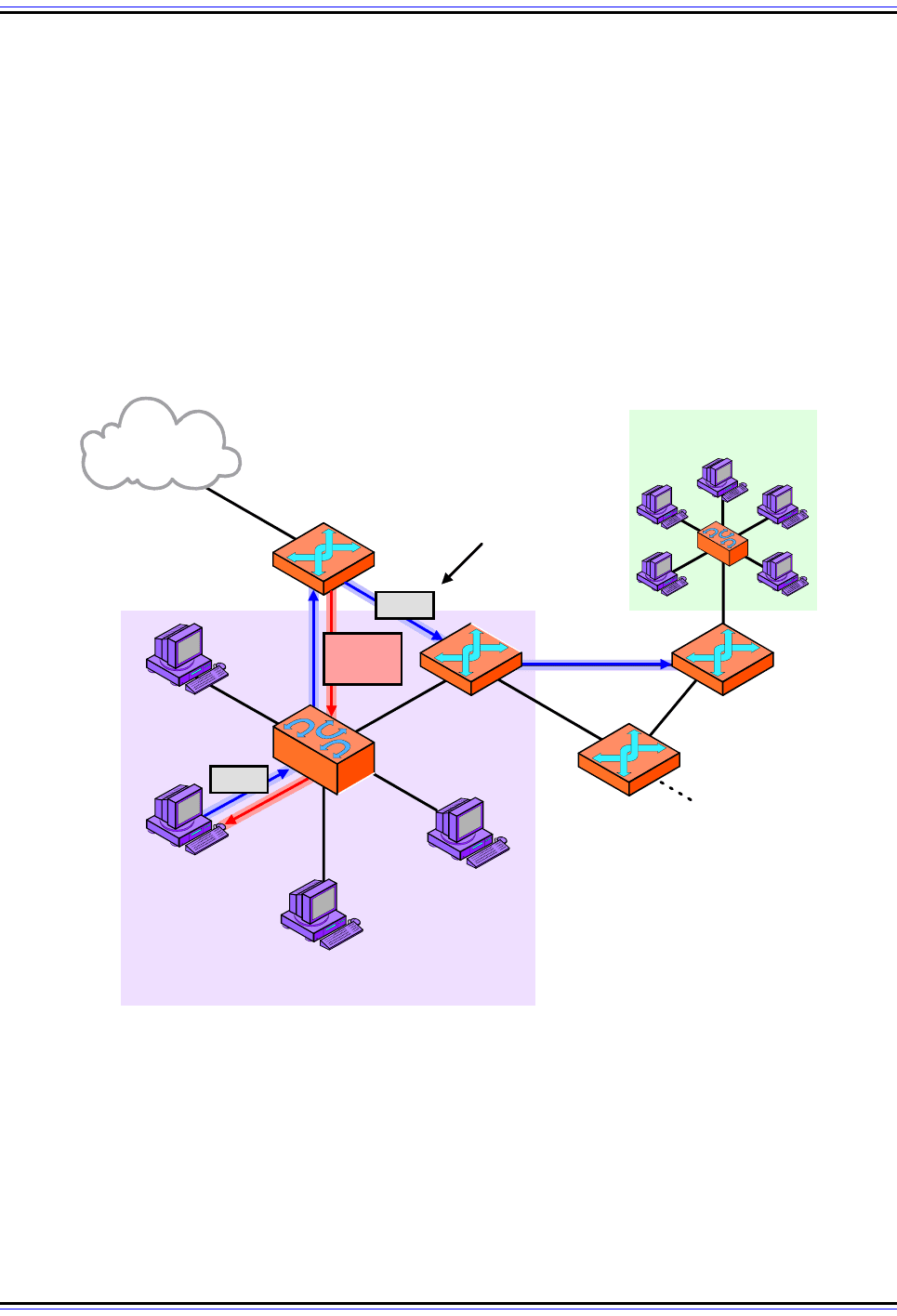
The TCP/IP Guide - Version 3.0 (Contents) ` 630 _ © 2001-2005 Charles M. Kozierok. All Rights Reserved.
R1 will look in its routing table and see that datagrams for N2 need to be sent through R2.
“But wait,” R1 says. “R2 is on the local network, and H1 is on the local network—so why am
I needed as a middleman? H1 should just send datagrams for N2 directly to R2 and leave
me out of it.
In this situation, R1 will send an ICMPv4 Redirect message back to H1, telling it that in the
future it should send this type of datagram directly to R2. This is shown in Figure 143. R1
will of course also forward the datagram to R2 for delivery, since there is no reason to drop
the datagram. Thus, despite usually being grouped along with true ICMP error messages,
Redirect messages are really arguably not error messages at all; they represent a situation
only where an inefficiency exists, not an outright error. (In fact, in ICMPv6 they have been
reclassified.)
Figure 143: Host Redirection Using an ICMP Redirect Message
In this example H1 sends to R1 a datagram destined for network N2. However, R1 notices that R2 is on the
same network and is a more direct route to N2. It forwards the datagram on to R2 but also sends an ICMP
Redirect message back to H1 to tell it to use R2 next time.
R2
Network N1
R1
Internet
R3
Network N2
H1
ICMP
Re dir e ct
IP
IP
Datagram Delivery
Continues
R4
